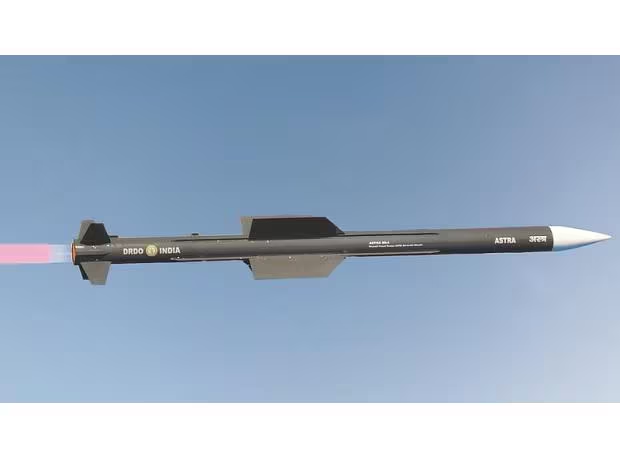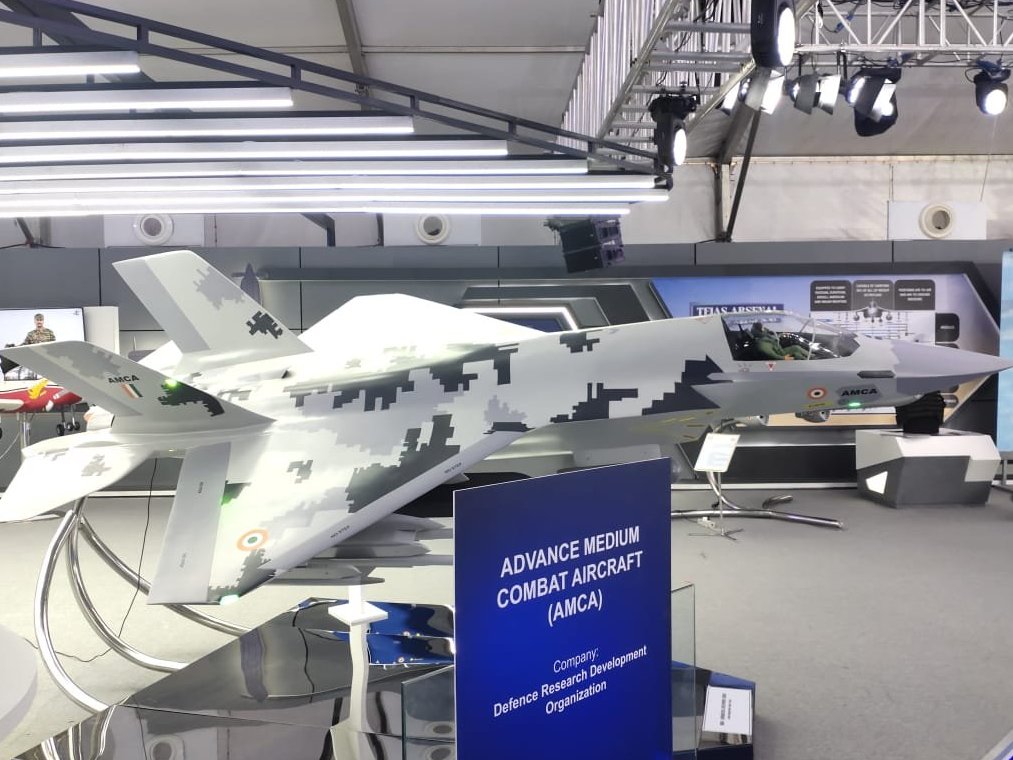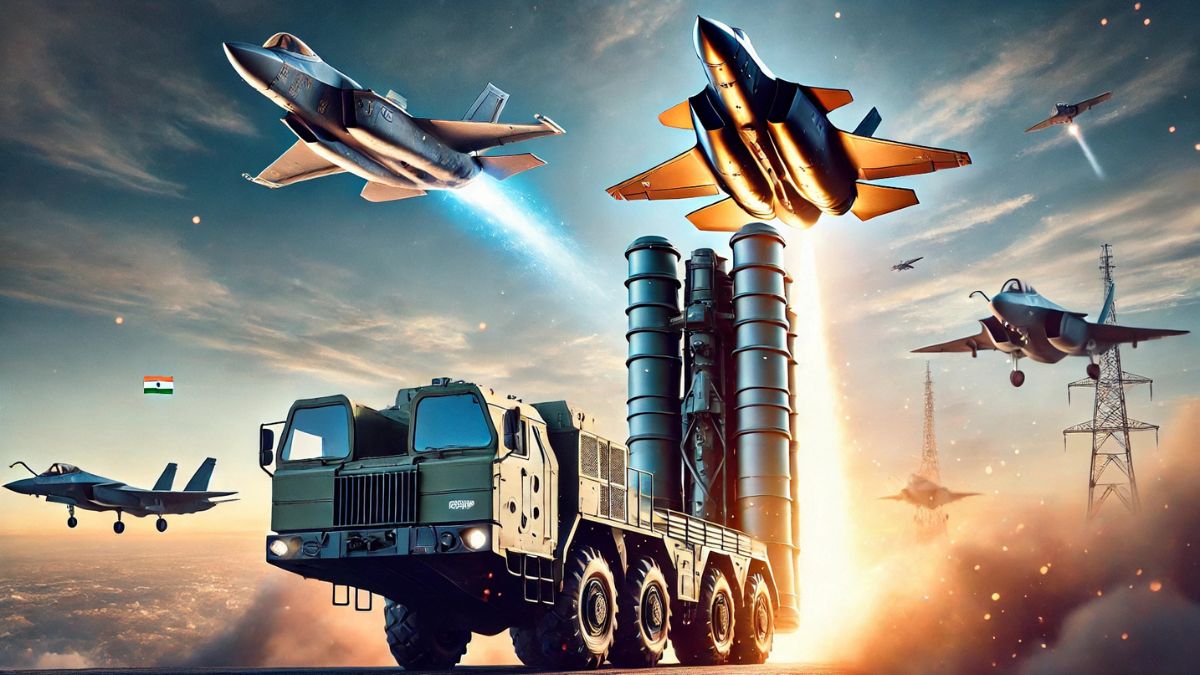India Air Defense System: The introduction of fifth-generation fighter aircraft (FGFA), notably in the form of aircraft like the American F-35, the Russian Su-57, and China’s J-20, has profoundly changed the landscape of modern air combat. Stealth technologies, advanced sensors, and sophisticated weapons systems have set these aircraft apart, making them capable of operating with a marked advantage over previous generations of warplanes. As these aircraft enter service worldwide, countries are working to modernize their air defense systems and fighter fleets to remain competitive and secure.
India, an emerging global power in both defense technology and military strategy, recognizes the implications of these technological advances. Over the last few decades, India has steadily developed its capabilities to counter modern airborne threats, including fifth-generation fighters. This article delves into India’s current and future capability to counter fifth-generation fighter aircraft, encompassing advanced air defense systems, indigenous technologies, and strategies.
Understanding 5th-Generation Fighters
Fifth-generation fighters are marked by several key features that give them a significant edge in combat, including:
Stealth: Their reduced radar signature allows them to avoid detection, giving them an upper hand during interception and strike missions.
Advanced avionics and sensor fusion: These aircraft use sophisticated radar and sensor technologies that provide superior situational awareness. Fusion of multiple sensor data ensures that pilots have unparalleled visibility of their operational environment.
High-speed maneuverability: The aerodynamic designs and advanced engines make these fighters extremely agile, allowing them to evade enemy fire.
Multirole functionality: 5th-generation aircraft typically excel in various combat roles, such as air superiority, ground-attack, and electronic warfare, making them more versatile.
In essence, these cutting-edge features make FGFA extremely effective in contested airspaces, posing a significant challenge to both air forces and air defense systems worldwide.
India’s Response to 5th-Generation Fighters: Strategic Overview
India, despite lacking an operational fifth-generation fighter in its fleet (the development of the AMCA—Advanced Medium Combat Aircraft—remains ongoing), is taking deliberate steps to develop and procure the tools necessary to counter modern threats posed by stealth aircraft.
India’s air defense strategy revolves around creating a multi-layered defensive architecture that employs various technologies at different operational altitudes, making it harder to breach airspace. Below are the primary facets of India’s defense initiatives against fifth-generation aircraft:
S-400 Triumf Air Defense System
The acquisition of the Russian-made S-400 Triumf surface-to-air missile (SAM) system by India represents one of the country’s most formidable countermeasures against stealth aircraft.
The S-400 is often described as the “game changer” in air defense because it has the capability to detect and target aircraft with low radar cross-sections (RCS) that would otherwise be difficult to intercept.

Equipped with multiple radar systems—each operating across different wavelengths—the S-400 can track stealthy and supersonic aircraft at ranges of up to 400 kilometers, far surpassing the detection range of older air defense systems. The radar’s high-frequency ability also increases the system’s efficacy at detecting and locking onto stealth targets, mitigating the reduced radar signature of fifth-generation fighters. This makes it a powerful tool for preventing deep penetration by modern fighter jets.
While the S-400 may not guarantee a 100% interception rate against stealth aircraft due to inherent limitations of all radar-based systems, its robust technological features make it a critical component of India’s strategic deterrence and counter-strategy against fifth-generation aircraft.
Astra Missiles: India’s Indigenous Air-to-Air and Surface-to-Air Solutions
India has made substantial progress in the development of its indigenous Astra missile, a long-range, air-to-air missile capable of targeting advanced aircraft. The Astra, with its radar-guided and infrared homing capabilities, is designed to counter both traditional and stealth aircraft, making it essential to the Indian Air Force’s future operations.

Moreover, there are ongoing developments in missile defense technology such as the Astra-2, an upgraded version, which aims to further improve detection, range, and stealth penetration capabilities.
On the surface-to-air missile front, India’s DRDO (Defense Research and Development Organization) is developing long-range systems, including the Barak 8 and the NASAMS-II (National Advanced Surface-to-Air Missile System), which enhance the country’s ability to defend against air threats from above.
With these capabilities, India can target and intercept advanced aircraft, including fifth-generation fighters, during engagements, reducing their operational advantages in air-to-air combat.
Indigenous Air Defense Systems and Upgrades
India is leveraging its extensive defense manufacturing expertise to create or upgrade indigenous air defense systems, many of which contribute to its ability to target stealth aircraft. The country’s most important steps in this direction include:

The Akash Missile System: An intermediate-range surface-to-air missile system that provides reliable defense at various altitudes and ranges. While originally not designed with stealth aircraft in mind, its components are being constantly updated with modern radar and guidance systems to deal with the evolving capabilities of newer threats.
Integrated Air Defense Network (IADN): One of the key strategic initiatives being undertaken by the Indian defense establishment is the establishment of a comprehensive Integrated Air Defense Network. This initiative will link radar networks, satellite inputs, early warning systems, and missile defense units into a seamless, nationwide mesh. The IADN will make it significantly more difficult for a fifth-generation fighter to penetrate India’s defense in real time, thanks to persistent surveillance and constant response coordination.
Air Combat Systems and Electronic Warfare Capabilities
While air-to-air missiles and surface-to-air defenses are important, equally critical are India’s efforts in electronic warfare (EW) capabilities, which have the potential to significantly degrade the combat effectiveness of stealth aircraft. India has invested in advanced jamming, spoofing, and anti-radar systems to target stealth technologies head-on.
For example, India’s work on advanced electromagnetic spectrum technology that can disrupt communications and radar signals significantly impacts stealth operations by limiting the efficacy of stealth aircraft in high-intensity combat.
Additionally, India’s advanced radar systems (like the ELTA series) continue to evolve to be effective at detecting low RCS targets. India’s focus on high-resolution surveillance radars is essential in negating the stealth advantages of modern fighter jets. For instance, some radar technologies being developed (or acquired) are capable of detecting stealth fighters using quantum radars or exploiting advanced computational algorithms that can reduce the capability of stealth aircraft to effectively hide from surveillance systems.

The Role of the AMCA: Preparing for the Next Generation
India is also building a long-term strategic capability to challenge advanced stealth fighters with its own indigenous fifth-generation fighter, the AMCA (Advanced Medium Combat Aircraft). Developed by HAL (Hindustan Aeronautics Limited), the AMCA aims to incorporate the best stealth and maneuvering technologies in India’s growing air force capabilities. The AMCA is expected to possess cutting-edge radar-absorbing materials and low RCS designs, enabling it to operate both offensively and defensively in contested airspaces alongside its competitors, such as the F-22 or F-35.
While the AMCA is still in the early stages of development, it represents India’s long-term vision of engaging, countering, and neutralizing future-generation fighters through both cutting-edge defense technologies and homegrown advanced platforms.
The Bigger Picture: A Comprehensive Air Defense Strategy
To effectively counter fifth-generation fighter aircraft, India’s approach will involve not just technical and technological advances, but also the enhancement of operational strategies. The country is likely to integrate these defense systems with its larger doctrine of asymmetric warfare, using advanced radars, drones, anti-satellite weapons, and other technologies in tandem to ensure a robust defense in any scenario. India’s no-first-use policy, combined with a solid defense architecture, strengthens the strategic balance in the region.
Conclusion
India’s ongoing efforts in both defense and aerospace technology suggest it is taking a proactive approach in securing its airspace from the advancements posed by fifth-generation aircraft. While the challenges remain significant due to the evolving nature of air combat technology, India’s air defense systems—like the S-400, Astra missiles, indigenous air defense programs, and electronic warfare initiatives—are paving the way for an increased ability to counter even the most advanced combat aircraft.
